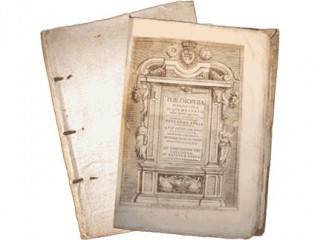
Cabeo Niccolò biography
Date of birth : 1586-02-26
Date of death : 1650-06-30
Birthplace : Ferrara, Italy
Nationality : Italian
Category : Science and Technology
Last modified : 2010-06-01
Credited as : Philosopher and physicist, Magnetic attractions and repulsions , Philisophia Magnetica
1 votes so far
He was born in Ferrara, Italy in 1586, and was educated at the Jesuit college in Parma beginning in 1602. He passed the next two years in Padova and spent 1606–07 studying in Piacenza before completing three years (1607–10) of study in philosophy at Parma. He spent another four years (1612–1616) studying theology in Parma and another year’s apprenticeship at Mantova. He then taught theology and mathematics in Parma, then in 1622 he became a preacher. For a time he received patronage of the Dukes of Mantua and the Este in Ferrara. During this time he was involved in hydraulics projects. He would later return to teach mathematics again in Genoa, the city where he would die in 1650.
He is noted for his contributions to physics experiments and observations. He observed the experiments of Giovanni Battista Baliani regarding falling objects, and he wrote about these experiments noting that two different objects fall in the same amount of time regardless of the medium. He also performed experiments with pendulums and observed that an electrically charged body can attract non-electrified objects. He also noted that two charged objects repelled each other.
Niccolo Cabeo discovered that electrified bodies can attract not electrified ones and two electrified “electricians” repulse each other.
He attended the Jesuit college in Parma and received the equivalent of a B.A. within the order. He was a Jesuit, having entered as a novice in 1602 and as a full Jesuit he would have had a theological degree.
Cabeo taught theology and mathematics in Parma until 1622, and was then a preacher in various Italian cities. He was in Genoa for a time. He was for a time in the service of the Dukes of Mantua and of the Este in Ferrara. He was employed by the Gonzaga on hydraulic projects. He differed with Castelli on the management of the Po at Ferrara. Ultimately he returned to the Jesuit college in Genoa where he taught mathematics.
Cabeo is remembered partly because he was acquainted with Giovanni Battista Baliani, who experimented with falling weights, and wrote about Baliani’s experiments. His interpretation that two different weights fall in the same length of time without regard to the medium became the indirect cause of other experiments conducted by Vincenzo Renieri. He also experimented with pendulums. He published two major works, “Philosophia magnetica” (1629) - image on top and “In quatuor libros meteorologicorum Aristotelis commentaria” (1646), an anti-aristotelian work. He dedicated the first book of his “Meteorology” to Carlo II, Duke of Mantua, the second book to Cardinal Spada, and the fourth book to Vincenzo Caraffa, General of the Jesuits.
Niccolo Cabeo noticed a very important occurrence. In ca. 1620 he discovered that electrified bodies can attract not electrified ones and two electrified “electricians” repulse each other. However, he observed the repulsion without understanding it and promoted the air-displacement theory that he popularized in his book “Philososphia Magnetica” (1629). In this book Cabeo investigated the magnetization of iron, attributed to the inductive action of the Earth’s field. He noticed that filings attracted by excited amber sometimes recoiled to a distance of several inches after making contact.
He writes: “Magnetic attractions and repulsions are physical actions which take place through the instrumentality of a certain quality of the intermediate space, said quality extending from the influencing to the influenced body… Bodies are not moved by sympathy or antipathy, unless it be by certain forces which are uniformly diffused. When these forces reach a body that is suitable they produce changes in it, but they do not sensibly affect the intermediate space nor the non-kindred bodies close by it…” Cabeo follows Gilbert closely, although he opposed the views of his predecessor on terrestrial magnetism. In one chapter he institutes a comparison between electrical and magnetic attraction.
Cabeo was the scientist who in 1641 described a type of wireless telegraph, with the admonition that it would be impossible to realize in practice.
















